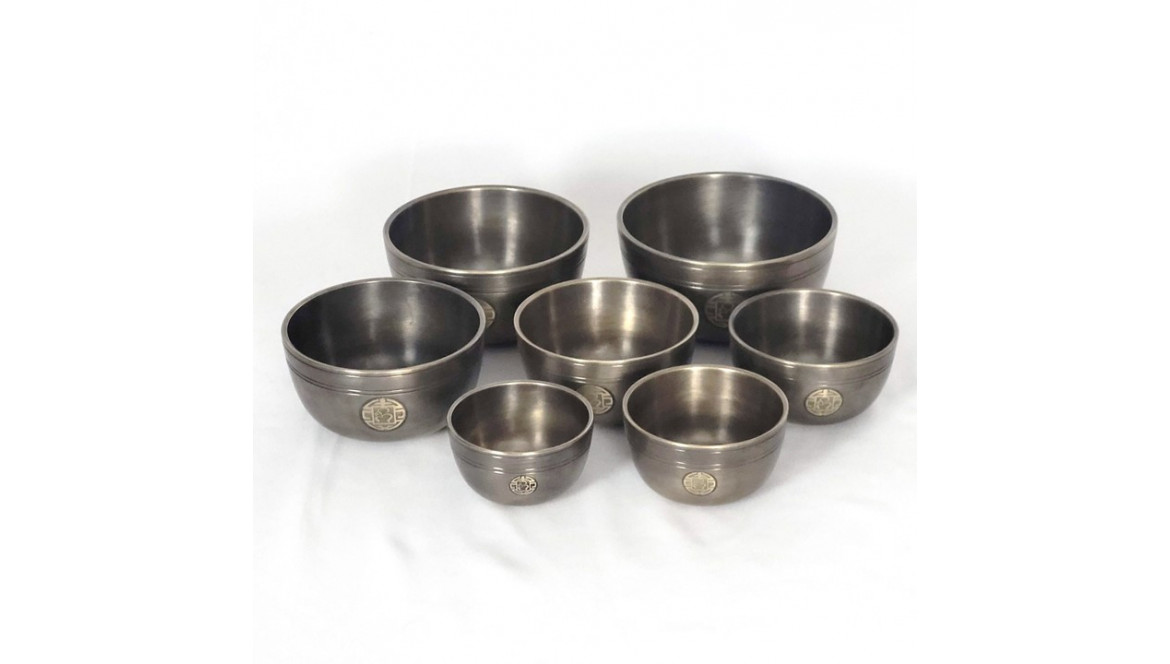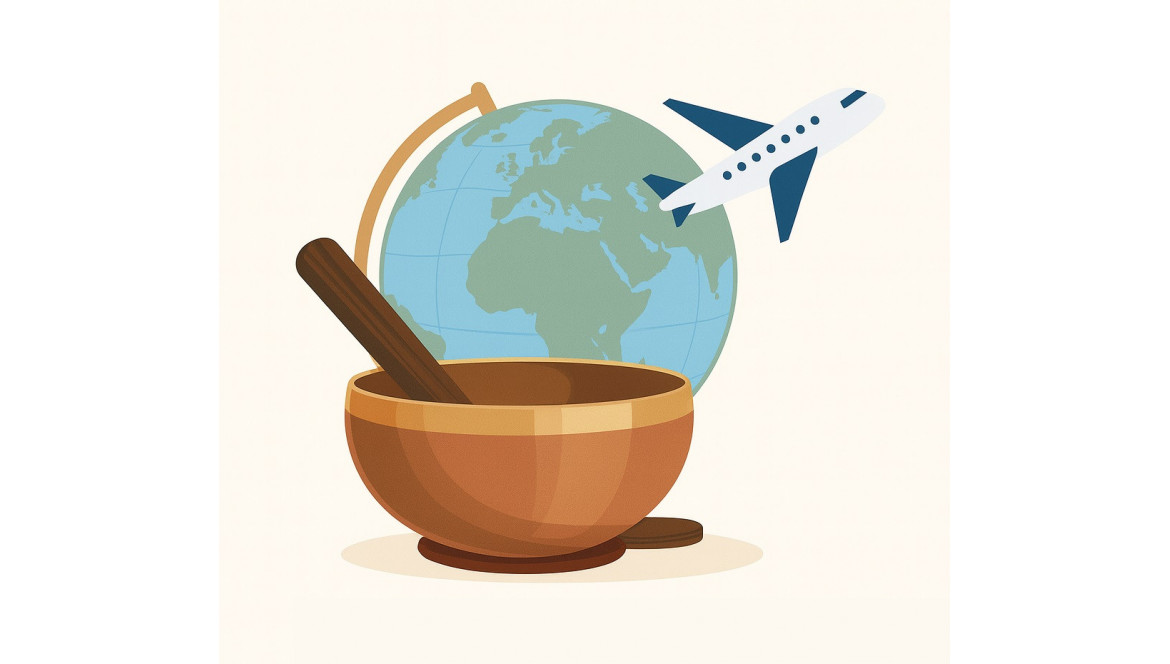Exploring the History and Cultural Significance of Tibetan Singing Bowls

This comprehensive overview delves into the rich history, cultural significance, and modern applications of Tibetan singing bowls. Originating from the Himalayan regions, these ancient instruments have been integral to spiritual practices, ceremonies, and well-being for centuries. Evolving through time, they have transcended traditional boundaries to influence global music, wellness practices, and contemporary culture. Their soothing tones aid meditation, relaxation, and healing, embodying harmony and mindfulness in today's fast-paced world. Preservation efforts and modern applications ensure these cultural treasures continue to resonate, bridging ancient wisdom with modern-day significance, inviting us to embrace tranquility amidst the rush of modern life.
Introduction to Tibetan Singing Bowls
Tibetan singing bowls are ancient instruments crafted from various metals and known for producing calming and beautiful sounds. Originating from Tibet and the Himalayan regions, these bowls carry a deep history tied to spiritual practices and cultural traditions. They’ve been used for ceremonies, relaxation, and improving well-being for a long time. They create soothing sounds that help people relax and feel peaceful when played. Despite their age, these bowls continue to be valued globally for their musical qualities and their ability to promote relaxation and well-being in today’s world.
Origins and Ancient Roots
The historical origins of Tibetan singing bowls trace back to the ancient Himalayan regions, primarily Tibet and Nepal. These revered instruments hold deep roots in the history of these areas, with their exact inception shrouded in antiquity. They are believed to have emerged during ancient times, intricately woven into the cultural tapestry of early civilizations. These bowls carry a profound historical lineage, likely intertwined with ancient cultures’ spiritual and ritualistic practices, serving ceremonial or meditative purposes. Though precise details may remain elusive, their existence throughout ancient cultures suggests a significant connection to rituals, spirituality, and the holistic well-being of these early societies.
Development and Evolution
The evolution of Tibetan singing bowls spans through the corridors of time, unfolding a captivating transformation narrative. These ancient instruments have undergone a remarkable journey, their evolution mirroring the changing landscapes of history. Across different historical periods, these bowls have seen shifts in their craftsmanship, with variations in materials, shapes, and designs marking different eras. Craftsmen refined their techniques, adapting and innovating to create these resonant vessels, each generation leaving its unique mark on their creation.
Moreover, the bowls’ purpose and significance have evolved, initially rooted in religious rituals and cultural ceremonies, transcending to encompass a broader spectrum of uses. From healing practices to meditation aids and even musical instruments, their versatility expanded, resonating with diverse cultures and practices across time. This evolution reflects the adaptability and enduring allure of Tibetan singing bowls, encapsulating the craftsmanship and cultural heritage of each era they traversed.
Cultural Significance
The cultural and spiritual significance of Tibetan singing bowls is profoundly woven into the fabric of the regions where they originate. These exquisite bowls carry immense cultural importance, revered for their spiritual symbolism and integral role in traditional practices. Within these cultures, these bowls aren’t merely musical instruments; they hold a sacred place in rituals, ceremonies, and daily life. They are believed to possess spiritual properties, with their resonating tones thought to evoke positive energy, restore balance, and aid meditation or prayer. These bowls have been utilized in various traditional practices as essential tools for healing, spiritual awakening, and connecting with the divine. Their use in ceremonies symbolizes harmony, invoking a sense of tranquility and spiritual elevation. Beyond their musical allure, Tibetan singing bowls are revered symbols embodying centuries-old spiritual beliefs, cultural heritage, and the essence of well-being in these ancient cultures.
 |
Global Spread and Influence
The global reach of Tibetan singing bowls marks a fascinating journey beyond their native origins. Once rooted in the Himalayan regions, these bowls gradually transcended geographical boundaries, captivating hearts worldwide. Their enchanting tones resonated far beyond their birthplace, finding a place in diverse corners of the globe. Beyond their traditional use, these bowls made their way into music, influencing genres and compositions and adding their unique melodic essence to contemporary tunes.
Moreover, their gentle vibrations became sought-after in wellness practices, gaining popularity in meditation, holistic healing, and mindfulness techniques worldwide. These bowls, once confined to ancient rituals, have become symbols of serenity and balance, influencing modern cultures, art forms, and everyday life, symbolizing a tranquil sanctuary amidst the rush of modernity. Their global ascent signifies a musical or therapeutic journey and a cultural bridge, uniting people across continents through a shared appreciation for harmony, mindfulness, and well-being.
Connection with Meditation and Healing
The bond between Tibetan singing bowls and practices like meditation, relaxation, and healing is profound and transformative. These bowls serve as allies in meditation, creating a serene ambiance that aids in quieting the mind and enhancing mindfulness. Their gentle tones guide individuals to a tranquil state, promoting deep relaxation and reducing stress. The soothing sounds emitted by these bowls have a remarkable effect, unwinding tension and instilling a sense of calmness. Moreover, their role extends beyond mere relaxation; these bowls contribute to holistic well-being. They’re believed to restore harmony within the body, mind, and spirit, aligning energies and promoting a sense of balance. In alternative therapies like sound therapy or vibrational medicine, their vibrations are considered therapeutic, fostering emotional release and supporting physical healing. Their harmonic resonance thus bridges inner peace, relaxation, and holistic wellness, enriching meditation and healing practices.
Preservation and Modern Use
Preserving the ancient craftsmanship behind Tibetan singing bowls is a testament to honoring cultural heritage. Efforts to safeguard traditional bowl-making techniques are underway, recognizing the historical significance and artistry involved in their creation. Amidst the pace of modern life, these bowls continue to find meaningful roles. They’ve seamlessly integrated into contemporary practices, serving as tools for meditation, mindfulness, and various wellness therapies. Moreover, their versatility extends to artistic expressions, with artists incorporating melodic resonance into modern compositions.
In today’s world, these bowls retain their cultural value and spiritual symbolism, revered for their therapeutic properties and ability to evoke tranquility. This appreciation transcends geographical boundaries, reflected in their demand and recognition within a global market, where they are sought after for their craftsmanship and unique qualities. Thus, preserving traditional techniques harmonizes with their modern-day relevance, ensuring the legacy of Tibetan singing bowls endures as both cultural treasures and tools for holistic well-being.
 |
Impact on Contemporary Culture
Tibetan singing bowls have experienced a notable surge in recognition within contemporary culture, transcending their traditional roots. Their growing popularity reflects an expanding acceptance beyond ancient practices, finding resonance in diverse cultural landscapes. These bowls have become sought-after elements in music and creative realms, contributing unique sounds and enriching modern compositions across various genres. Moreover, their presence in wellness industries has surged, gracing spa sanctuaries, yoga studios, and holistic centers worldwide. They’ve seamlessly integrated into mindfulness practices, aiding meditation and relaxation therapies amid the hurried pace of modern life. Symbolically, these bowls signify tranquility and connect people to ancient wisdom and mindfulness in today’s society. This integration into contemporary culture solidifies their relevance, embracing a harmonious balance between old traditions and their modern-day significance in music, wellness, and mindful living.
Conclusion: Embracing Tradition in a Modern Context
The historical odyssey and cultural significance of Tibetan singing bowls reveal a profound narrative transcending time. As these ancient instruments traverse history, their resonance remains vibrant, integrating seamlessly into our modern world. Their journey, from ancient rituals to contemporary culture, symbolizes a harmonious blend of tradition and relevance. Embracing the echoes of ancient wisdom encapsulated in these bowls invites us to appreciate the enduring legacy of these cultural treasures. In a fast-paced world, these bowls serve as gentle reminders to pause, reconnect, and embrace the tranquility offered by ancient traditions, fostering a sense of balance and mindfulness in our lives today. Thus, honoring these age-old practices enriches our modern existence, offering a serene refuge amidst the whirlwind of the present.









Comments
No comment at this time!
Leave your comment